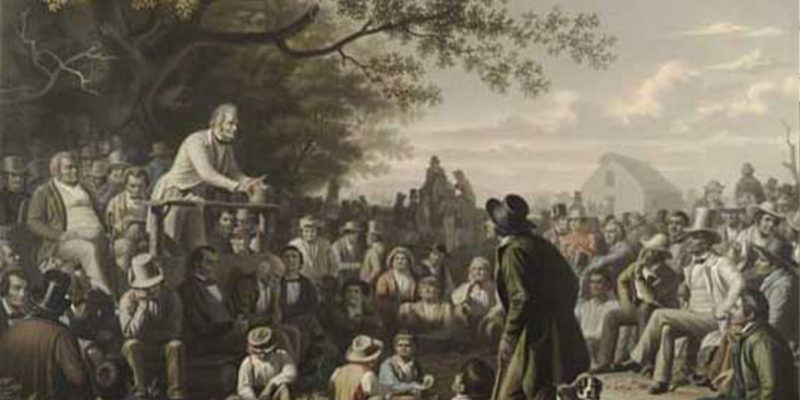Civil society in Eurasia is not always a friend to Washington, and is, at times, an ally to Moscow. This paper reviews select Eurasian civil society organizations and their role in Russian hybrid warfare.
In September 2019, the Organization for Security and Cooperation in Europe (OSCE), the world’s largest security-oriented organization responsible for arms control and, most prominently, human rights, freedom of speech, and freedom of association in Europe, held its annual Human Dimension Implementation Meeting (HDIM) in Warsaw, Poland. The purpose of the HDIM is to offer civil society organizations from across Europe and around the world a chance to commingle, discuss pressing issues and enduring questions in their respective fields, and relay developments in human rights and liberties to the government and non-government organizations that are in attendance. However, these aims were frustrated in Warsaw in 2019 as numerous “GONGOS”—Government Organized Non-Governmental Organizations—supported by the Russian Federation and members of the Eurasian Economic Union were present at the HDIM. These GONGOS offered “controversial” and “alternative” narratives to the facts that were presented by the delegations of U.S. and EU funded or supported Civil Society Organizations (CSOs) that were also in attendance.
The controversial and alternative narratives espoused by GONGOS at the HDIM in Warsaw led an entire Ukrainian government delegation to walk out and yell in protest, following the pro-Kremlin comments of a Russian GONGO which supported Moscow’s position on the conflicts in Donbass and Crimea, Ukraine (Synovitz 2019). As the U.S. Helsinki Commission has stated, “GONGOs are funded and sometimes created by governments to participate in the meetings, praise the regime, and take up time in order to minimize the length and impact of real NGO statements,” and those present at the HDIM were no different. These GONGOS, supported by Russian officials who were attending the HDIM, not only made incendiary and fraudulent comments but challenged recognized NGOs, civil activists, and journalists who shared and vocalized the OSCE’s position on various issues throughout Europe. One such issue is the Russian invasion of Crimea and Donbass, which the OSCE views as an illegitimate invasion of a sovereign country. Some attending organizations, such as CrimeaSOS, went one step further than the OSCE in accusing the Russian Federation of human rights abuses for its treatment of local Tartar populations and its active attacks on freedom of speech and association in Ukraine’s occupied areas. In response to the accusations, pro-Kremlin Journalist Maria Volkonskaya criticized CrimeaSOS, saying “these people are members of a terrorist organization banned in Russia and in many other countries and their work has nothing to do with any form of journalistic activity,” while Russian government delegate to the OSCE Kiril Ignatov claimed the HDIM was being used “to encroach on the territorial integrity of the Russian Federation,” (Synovitz 2019).
However, Russia’s use of GONGOs and interest in manipulating U.S. policy toward Eurasian civil society space does not begin or end with the 2019 HDIM. The example of Ukrainian delegates walking out in protest of GONGO comments, or the attacks on traditionally recognized NGOs, civil activists, and journalists by Russian state officials at the HDIM, represent a growing Russian strategy to utilize civil society organizations and multilateral platforms in order to undermine U.S. policy and promote Russian interests in Eurasia. From fraudulent GONGOs guided by Russian state actors to internet trolling, incendiary comments, and taking over event spaces at U.S. and EU funded civil society events such as the HDIM, the Kremlin propagates pro-Russian narratives, bogs down substantive debates in the field of human rights, and hinders U.S. policy regarding democratization, anti-corruption, and the westernization of the post-Soviet space. In the past decade and a half, the Russian Federation has made a marked shift in its policy toward civil society in its near abroad, adopting an “if you can’t beat em’, then join em’ and manipulate em’” strategy which often coopts American efforts to promote legitimate civil society in the region and obfuscates said efforts via GONGOs and other Russian state-run organizations.
Strangely enough, Russia has not always pursued this policy of disinformation and destabilization using western civil society formats themselves. In the crucible that was the 1990s in the Russian Federation, Moscow looked upon the post-Soviet space and the United States’ and the European Union’s growing support for local and international civil society in the region with a mixture of reverence, concern, and, at times, hostility. Proponents of democratization in the Russian Federation proper, such as Russian President Boris Yeltsin, were known advocates for expanding civil society, while critics of U.S.-led civil society, such as Russian Foreign Minister Yevgeny Primakov, were known for their skepticism toward “liberalization” in and around the Russian Federation. Generally, the Russian Federation of the 1990s and early 2000s viewed U.S.- and EU-supported civil society with caution. Many Russian figures saw U.S. policy as a means for the proverbial “West” to influence the political, economic, and security sphere of Russia’s “near abroad,” while some in Moscow insinuated nefarious motives behind the United States’ support for these new “local movements.”
However, by the end of the Yeltsin-Primakov era, Moscow’s leadership exhibited a keen interest in formulating a “Russian” civil society that could counter U.S. and EU civil society, one that would adhere to what the Kremlin wanted said and done. In the Putin-Lavrov Era, NCOs, or “Non-Commercial Organizations” as they are referred to in Russia, were culled and groomed to fit this new format. Small dissenting think tanks, NGOs, and charity organizations were dismantled through Duma legislation. One such measure was a 2012 law on “foreign funding,” whereby all non-commercial entities were required to disclose their funding sources and accept foreign agent status if receiving direct funds from abroad. Commenting on the scope of this law in 2017, Vladimir Putin indicated that organizations flagged for receiving foreign funds must either cease their political activity, leave Russia, or receive funding only from government approved sources (Svetova 2019).
As a result of these measures, the predominant think tanks in the Russian Federation today—the Council on Foreign and Defense Policy, Valdai Discussion Club, Russian International Affairs Council, and Russian Institute for Strategic Studies—receive funding and support largely from the Russian executive office, the Ministry of Foreign Affairs, MGIMO University, and private oligarchs (Atlantic Council 2019). The new financial reality has made these Russian NCOs a vehicle for pursuing foreign policy objectives and a domestic mouthpiece for legitimizing alternative facts. In other words, by the end of the 2000s, the Russian Federation had created a domestic framework for the GONGOs it would soon release in it is “near abroad” in countries such as Ukraine, Georgia, and Moldova, and at events such as the HDIM in 2019.
After the 2000s, these GONGOs were no longer limited to the Russian Federation but were quickly incorporated in countries of interest to the Kremlin, and specifically post-Soviet countries reorienting themselves away from Russia and towards the EU and the United States. According to a Chatham House article, entitled “Agents of the Russian World: Proxy Groups in the Contested Neighbourhood,” GONGOs associated with the Russian Federation and member states of the Eurasian Economic Union “are particularly active in Ukraine, Georgia, and Moldova – countries that have declared their intention to integrate with the West,” and “they also operate in the Baltic States as well as in the wider Balkan region, especially in Serbia and Bulgaria, and their presence has grown in Kyrgyzstan since it became a member of the EEU in August 2015.” Given the United States’ strategic partnership with The Republic of Georgia, U.S. political and economic interest in Ukraine, and above all, the growing recognition of Ukraine’s and Georgia’s desire to attain NATO membership and to further integrate into the EU through anti-corruption, democratization, and other liberalizing initiatives, the destabilizing effect of Russian GONGOs are grave.
As Free Russia Foundation editor and journalist Michael Weiss put it at a foundation event in Kyiv, Ukraine in 2019, “I am terrified of GONGOs;” per his explanation at the event, and for the reasons mentioned above, he is correct to hold this opinion. Yet for all that Russian GONGOs can do to limit and disrupt U.S. and EU policy in the post-Soviet space and Russia’s near abroad, they can also benefit U.S. policy and cripple Russia’s position in these areas.
According to the former Head of the U.S. Mission to the OSCE, Ambassador Daniel Baer, “repressive regimes unable to convincingly respond to criticism from ‘bona fide’ civil society organizations have found they can set up their own fake organizations that will shill for the government in an attempt to distract from repressive failings,” and “GONGOs masquerading as bona fide civil society organizations frequently team up with repressive governments’ state-controlled media. In a synergy of fake news and fake advocates that helps repressive regimes to create theoretical illusions to justify their grasp on power.” The key phrase here is “theoretical illusions to justify their grasp on power.” In certain regions, such Ukraine and the Republic of Georgia, or at certain events, such as the HDIM, GONGOs and their partners can achieve minor disruptions but are generally less effective than internationally recognized CSOs. The exploits of the former translate into minimal tangible victories when it comes to winning hearts or minds in these regions, or discouraging western countries from further encroachment into Russia’s periphery. While hybrid warfare rages in Donbass, Ukraine and South Ossetia, Georgia, ‘civil warfare’ carried out by GONGOs rages in cities like Kyiv and Tbilisi, but this has done little to help Russia consolidate support from the populations it targets or move targeted regions away from the EU. In fact, Russia is worse off today, using GONGOs and obfuscating the civil society space, than yesterday when it simply opposed civil society. For example, a 2019 International Republican Institute Poll concluded that more than 53 percent of Ukrainians now want Ukraine to join NATO compared to 34 percent in 2014, before civil or hybrid warfare broke out in the region (Grytsenko 2019).
In summation, it is true that the Russian Federation has been able to successfully obfuscate U.S. policy in Eurasia through GONGOs and the civil society space they penetrate. However, these efforts have proven to have mixed effects on both U.S. and Russian policy in these areas, and certain attempts to undermine U.S. policy initiatives have reverberated in favor of Washington more than Moscow. Subsequently, the best position the U.S. can take is to remain resolute in supporting civil society and to refrain from making concessions to Russia in Eurasia, regardless of the disruption these GONGOs and the Russian Federation may pose to the implementation of U.S. policy in the region.
References
Baer, Daniel B. “Mind the GONGOs: How Government Organized NGOs Troll Europe’s Largest Human Rights Conference.” U.S. Mission to the OSCE, September 30, 2016. https://osce.usmission.gov/mind-gongos-government-organized-ngos-troll-europes-largest-human-rights-conference/.
Barbashin, Anton, and Alexander Graef. “Thinking Foreign Policy in Russia: Think Tanks and Grand Narratives.” Atlantic Council, November 12, 2019. https://www.atlanticcouncil.org/in-depth-research-reports/report/thinking-foreign-policy-in-russia-think-tanks-and-grand-narratives/.
Grytsenko, Oksana. “Kyiv Post Cites New Ukraine Poll: NATO Support Grows in Ukraine, Reaches 53 Percent.” International Republican Institute, July 9, 2019. www.iri.org/resource/kyiv-post-cites-new-ukraine-poll-nato-support-grows-ukraine-reaches-53-percent.
Lutsevych, Orysia. “Agents of the Russian World: Proxy Groups in the Contested Neighbourhood.” Chatham House, December 7, 2018. https://www.chathamhouse.org/publication/agents-russian-world-proxy-groups-contested-neighbourhood.
Svetova, Zoya. “NGOs in Russia: Do They Still Stand a Chance? (Op-Ed).” The Moscow Times, February 12, 2018. https://www.themoscowtimes.com/2018/02/12/ngos-do-they-still-stand-a-chance-russia-svetova-a60471.
Synovitz, Ron. “Attack Of The GONGOs: Government-Organized NGOs Flood Warsaw Meeting.” RadioFreeEurope/RadioLiberty, September 30, 2019. https://www.rferl.org/a/attack-of-the-gongos-government-organized-ngos-flood-warsaw-meeting/30191944.html.




 Compass is an online journal that provides a space for the work of talented undergraduates who have original and well-articulated insights on important ideas and issues relating to American democracy understood in the broad contexts of political philosophy, history, literature, economics, and culture.
Compass is an online journal that provides a space for the work of talented undergraduates who have original and well-articulated insights on important ideas and issues relating to American democracy understood in the broad contexts of political philosophy, history, literature, economics, and culture.